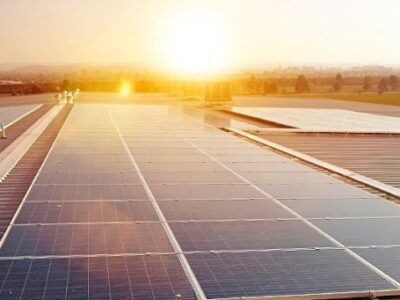Cradled in the rolling Blue Ridge Mountains of Western North Carolina, Asheville is a romantic, scenic city famous for its architecture and vibrant art scene. Recently, this artistic enclave became the home of a new kind of installation. The newly renovated ART transit center in Downtown Asheville hosts the city’s first solar installation that is currently producing clean renewable energy for the city. The panels have produced over 29.47 Megawatt Hours of energy in just over 3 months of operation, saving 45,639.12 lb of CO2 emissions. The City of Asheville also developed a live online tracker so that residents could see the real-time energy production of the installation, as well as keep track of the energy stats over time.
Working with a local construction company, M.B. Hayes, the project cost just under $130,000, and officials expect that in 25 years the project will have paid for itself. Funding for the ART transit solar installation came from the city’s Green Savings Account. “The Green Savings Account is generated from avoided energy costs following the City’s initiative to retrofit all streetlights to LEDs” they share. All of the energy generated from the PV panels will be sold to Duke Energy in a “sell-all” agreement that will distribute the energy into the grid system and reimburse the city for the energy consumed. The solar panels over the ART Transit Center are simply the first step in an initiative to powering all municipal operations in Asheville with 100 percent renewable energy by 2030.
Buncombe County officials approved the $10.3 million project that includes 45 additional solar installations throughout the county with 5 located within the city of Asheville. Collectively, the five city-owned solar installations will support 259 kW of clean energy generation, and the city expects to break ground on the next project, a Public Safety Station, in May of 2021. These early investments in solar energy will ultimately save the city and it’s citizens millions of dollars. “The county estimates the project will save taxpayers $27 million in utility bill costs within 30 years,” according to local reporters at WLOS. The county’s effort toward 100 percent renewable power is detailed through four separate pathways of action.
The report details current actions the locale is taking to achieve total renewable power. One section in particular suggests “85 municipal buildings with rooftops available for solar development” that if fully developed “could provide about 960 kW of solar capacity at an upfront cost of $2.7 million.” The report also estimates that within 11 to 16 years, the upfront cost will have been recuperated through energy savings. Then the report highlighted how the streamlined solar panel installations, including the Solsmart Gold certification they received in 2018. “This designation demonstrates the City’s commitment to support a clean energy economy and transition to a clean energy future, which is one of the goals of the Energy Innovation Task Force,” Bridget Herring, Energy Program Coordinator for the City’s Office of Sustainability, said in a press release. “In an environment where state law restricts the financing mechanisms for renewable energy, it is important that the City does what it can to remove barriers and costs to such installations.”
The report also details how the region may begin to lease vacant public land to a utility company for the purpose of solar development. “Under this arrangement, DEP (Duke Energy Progress) would provide the municipalities with lease payments for the use of sites for renewable energy development. Electricity generated from leased and would feed directly to the grid, contributing to DEP’s overall energy mix. This would ultimately contribute to the county’s, city’s, and community’s energy mix through the purchase of electricity through the utility.” While this will not directly contribute to the municipality’s clean energy use, it would provide local residents with more access to renewable energy. Developing this vacant, public land could produce up to 5.6 MW which is 25 percent of the energy needed to power municipal functions. However, much of that energy will feed directly into the grid, leaving a fraction of the full potential for the municipality. Non-energy benefits for these projects include cleaner air, 300 tons of CO2 emissions saved monthly, and the creation of 156 full-time clean energy jobs.
The report then details three backup plans, to ensure the county reaches its goal by 2030. Such plans include the purchase of RECs and PPAs through Duke Energy Progress, leasing land to local solar developers, and detailing state-wide actions. These programs have the potential to create over 7,348 cumulative full-time clean energy jobs both inside and outside of the state. This report functions as a road map to total renewable energy power within 10 years and details similar actions already underway across the countries. Ultimately, Asheville and Buncombe County hope that other municipalities will learn from their efforts, and the process to achieve clean energy independence will become easier over time. Soon, Asheville should join the list of cities enjoying 100 percent clean energy power such as Aspen, Colorado; Burlington, Vermont; and Georgetown, Texas. In the future, this city nestled in the Blue Ridge mountains will be a beacon of bright green energy.





